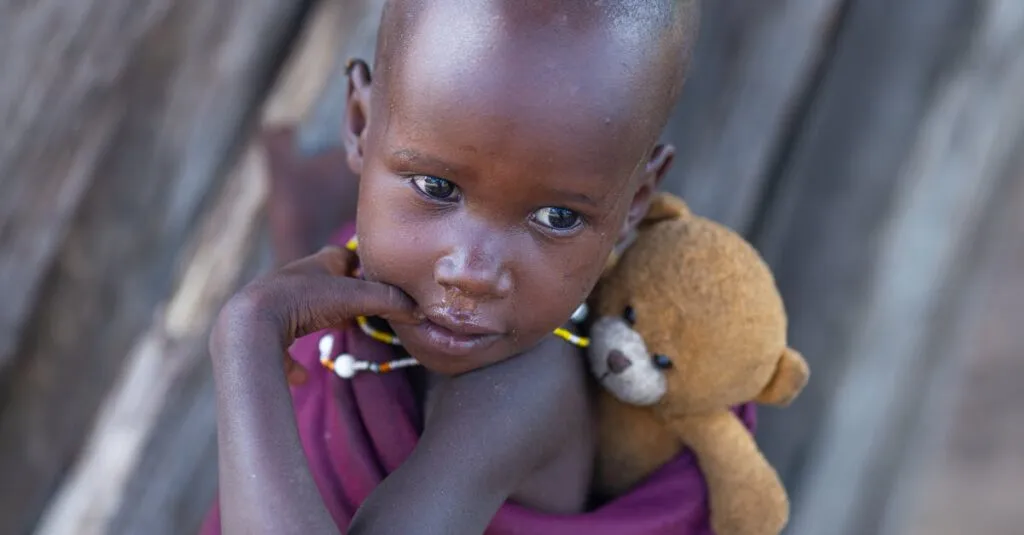Understanding Forgiveness for Little Minds
Forgiveness is a big word with a bigger meaning, especially for pre-schoolers who have faced tough times. Explaining forgiveness to a child is like trying to describe a rainbow—colorful but tricky!
This process can be especially challenging for those who’ve experienced trauma. But fear not, understanding forgiveness starts with little, simple steps.
How Kids Can Learn Forgiveness
Kids can learn forgiveness through everyday interactions, such as:
- Sharing toys
- Making up after a small disagreement
They need patience and clear examples. A little humor goes a long way; think of it like teaching them how to eat their veggies—slow and steady wins the race.

Challenges of Forgiving Past Hurts
Children who’ve experienced trauma often struggle with forgiveness due to lingering hurt. These emotional hurdles can manifest as reluctance or even tantrums when asked to forgive. It’s essential to understand their past and how deeply it affects their ability to let go.
Parents can find this challenging, feeling like they’re swimming upstream. Encouragement works wonders here; reminding kids that it’s okay to trust again.
Strategies to Support Forgiveness
- Use real-life situations to illustrate feelings of anger, sadness, or betrayal.
- Help kids articulate these feelings, making the concept of forgiveness more accessible.
- Engage in open dialogues about their emotions, fostering a safe environment for expression.
By providing guidance and understanding, parents can help children navigate the complex emotions tied to forgiveness.

Role of Play in Learning Forgiveness
We all know kids love to play, and integrating play is a gateway to teaching forgiveness. Pretend play with dolls or action figures can create role-play scenarios, showing how characters forgive and move on. For example, if a toy bear breaks a car, showing how to repair it together can depict reconciliation.
Play allows children to express emotions without words, bridging gaps left by trauma. Laughing it out can ease the tension; let your inner child guide you. Remember that for children, play is their language, and through it, they speak volumes about their world and their understanding.

Importance of a Trusting Environment
A trusting environment is the cornerstone of teaching forgiveness. Children are like sponges, absorbing every vibe around them. After trauma, they may erect walls to protect themselves. Creating a safe and warm environment helps break down these barriers.
Show openness and honesty, which encourages them to do the same. Create routines that boost security and foster connection. A nightly storytime can be a ritual that tightens bonds. Trust is nurtured through consistency, so be consistent in your actions and words.
Like planting a tree, it takes time to see the growth, but the fruits of forgiveness will be worth the wait.

Encouraging Patience and Empathy
Patience is often seen as the cousin of forgiveness. Teaching empathy and patience to children sets a strong foundation for learning forgiveness. Here are some strategies to encourage these values:
- Encourage perspective taking through simple questions like, ‘How do you think they feel?’
- Recognize that patience allows children to process their emotions at their own pace, which is essential for those with trauma backgrounds.
- Find ways to practice patience and empathy in everyday situations.
Additionally, using humor can help lighten stressful attempts at practicing patience. For instance, consider sharing a funny story about waiting to help illustrate the concept.
By pacing yourself with patience, you’re showing children that it’s okay to pause, breathe, and think before reacting.

Using Stories and Books
Stories are magical when it comes to unlocking emotions and concepts in children’s minds, such as forgiveness. Choosing picture books that focus on characters forgiving each other can make a big difference.
A parent favorite is ‘The Forgiveness Garden’, which simplifies the complexity of forgiveness. Stories present relatable situations without the pressures of real-life consequences, making it easier for children to understand.
Discussing these stories nurtures open dialogues with children about their feelings, transforming reading time into a safe space for exploring emotions. Plus, nothing beats acting out scenes with funny voices, cementing lessons while having a laugh.

Celebrating Small Milestones
Celebrate the small wins when teaching forgiveness, especially with sensitive minds. It’s like giving a standing ovation for brushing their teeth!
Notice when they:
- Apologize
- Hug after disagreements
- Share happily
Turn these moments into a celebration, cementing the behavior positively in their minds. Small acknowledgments lead to long-lasting change.
Crafting a Kindness and Forgiveness Chart
Consider creating a sticker chart to celebrate moments of kindness and forgiveness. Keep it fresh by adding new activities that deserve praise.
Encouragement and Recognition
Encourage them to recognize forgiveness in others too. Reminding kids that forgiveness is a continuing practice motivates continued behavior.

